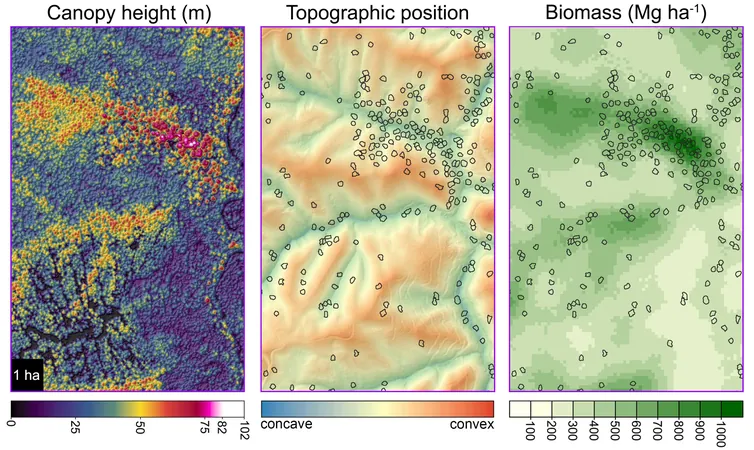
Unlocking Forest Resilience: The Case for Protecting Exceptional Trees in Managed Forests
2025-07-12
Author: Mei
Rethinking Forest Management Strategies
Most traditional forest management prioritizes timber production, often sidelining the health of the ecosystem. This creates a stark divide between forests treated as mere plantations or as untouched reserves. However, uneven-aged management presents a middle ground, minimizing ecological disruptions while still allowing for timber harvests.
The Power of Retention Forestry
While selection forestry decides which trees to cut, retention forestry emphasizes preserving trees that provide ecological benefits post-logging. These biological legacies sustain ecosystem continuity, offering critical habitats for various species.
Exceptional Trees: A New Hope for Ecosystem Integrity
A groundbreaking study recently published in *Forest Ecology and Management* highlights the potential of preserving a select group of 'exceptional trees.' These trees, specifically the venerable Sequoia sempervirens (redwood), were found in California's Demonstration State Forests, showcasing impressive biomass and productivity.
In-Depth Analysis of Tree Characteristics
Researchers scoured 20 different locations to identify exceptional redwoods—trees marked by their broad crowns and robust branches. By utilizing innovative methods, including advanced lidar technology, they meticulously collected data to estimate tree biomass and evaluate the overall health of the forest.
Findings Reveal a Rich Legacy
The research unveiled a concerning trend: many surveyed areas held few exceptional trees, resulting in biomass levels below 10% of primary redwood forests. Alarmingly, larger trees that existed in historical records have drastically declined, prompting calls for restored management practices.
Boosting Carbon Storage Through Strategic Retention
If long-term carbon storage is a goal, it is crucial to encourage the growth of larger trees beyond designated protected zones. As redwoods age, they unlock more biomass, bolstering carbon sequestration and contributing to ecosystem resilience.
Fostering Biodiversity and Connectivity
Additionally, a network of exceptional trees could play a pivotal role in enhancing habitat connectivity within these managed forests. Biodiversity often thrives around these legacy trees, making their preservation vital.
A Balanced Approach to Timber Production
Preserving a portion of exceptional trees doesn't have to conflict with timber production. Decades-old redwoods can benefit from selective logging of nearby trees, showcasing how ecological health and economic interests can align.
Setting a Vision for Future Forests
Establishing criteria for exceptional tree designation alongside habitat trees population ensures a legacy of large trees in the future. These chosen giants will not only cache carbon but also evolve into vital ecological assets for the coming generations.
Innovative Practices for Sustainable Forestry
While the concept of live tree retention is not new, ensuring the permanent protection of robust trees in all forest types is a promising twist on traditional practices. Combining modern technology like lidar with hands-on verification can inform future decisions about which trees deserve indefinite protection.
A Vision for Hope in Managed Forests
Ultimately, safeguarding exceptional trees represents a key step toward fostering healthier managed forests. This holistic approach can restore ecosystems, promote biodiversity, and provide a sustainable path forward for generations to come.


 Brasil (PT)
Brasil (PT)
 Canada (EN)
Canada (EN)
 Chile (ES)
Chile (ES)
 Česko (CS)
Česko (CS)
 대한민국 (KO)
대한민국 (KO)
 España (ES)
España (ES)
 France (FR)
France (FR)
 Hong Kong (EN)
Hong Kong (EN)
 Italia (IT)
Italia (IT)
 日本 (JA)
日本 (JA)
 Magyarország (HU)
Magyarország (HU)
 Norge (NO)
Norge (NO)
 Polska (PL)
Polska (PL)
 Schweiz (DE)
Schweiz (DE)
 Singapore (EN)
Singapore (EN)
 Sverige (SV)
Sverige (SV)
 Suomi (FI)
Suomi (FI)
 Türkiye (TR)
Türkiye (TR)
 الإمارات العربية المتحدة (AR)
الإمارات العربية المتحدة (AR)